What Is Ethnic Rhinoplasty?
Dr. Anil Shah, an esteemed figure in ethnic rhinoplasty in New York City, has revolutionized the approach to nose enhancement for individuals of various ethnicities. Acknowledging the significant diversity in nasal characteristics across different backgrounds, Dr. Shah has categorized ethnic rhinoplasty into distinct subgroups. This classification is crucial because even within specific ethnicities, the natural range of nasal features is vast.
His methodical approach involves understanding the unique anatomical traits associated with each ethnicity, such as nasal bridge height, tip definition, and nostril width. By tailoring surgical techniques to these specific characteristics, Dr. Shah ensures that patients achieve results that harmonize with their facial features while preserving their ethnic identity.
By subdividing ethnic rhinoplasty based on specific backgrounds, Dr. Shah exemplifies a commitment to precision and inclusivity in cosmetic surgery, empowering patients to embrace their unique beauty with confidence.
Types of Ethnic Rhinoplasty Procedures Offered in NYC
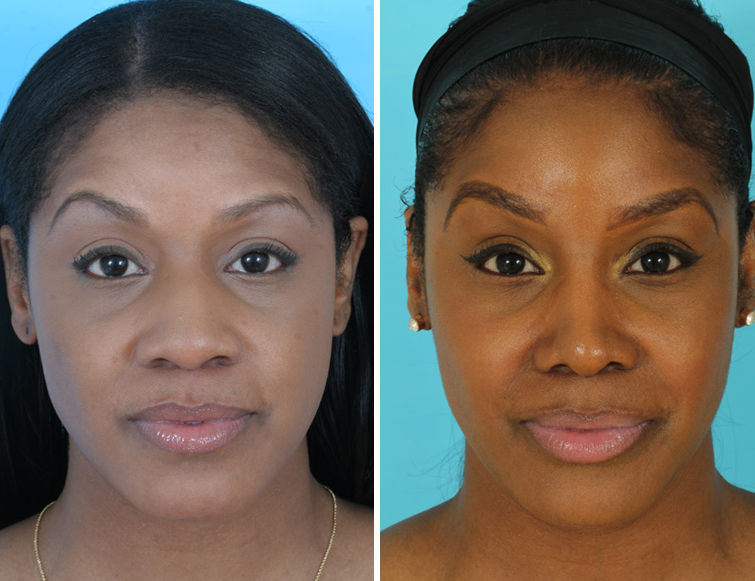
African American Rhinoplasty
Dr. Anil Shah’s approach to African American Rhinoplasty in New York City is marked by a keen understanding of the diverse nasal characteristics within this ethnic group. Many African American patients seeking rhinoplasty express a desire for increased definition in the nasal tip, a narrower alar base, and sometimes augmentation of the nasal bridge.
One common issue Dr. Shah addresses is the softness of the lower lateral cartilages and the lack of structural support in the nose. Providing additional support to the nose often results in improved nasal tip definition. Reducing the bottom portion of the nose, a procedure known as alar base reduction, is another key component of African American Rhinoplasty. This procedure may require an external incision but can significantly enhance facial balance.
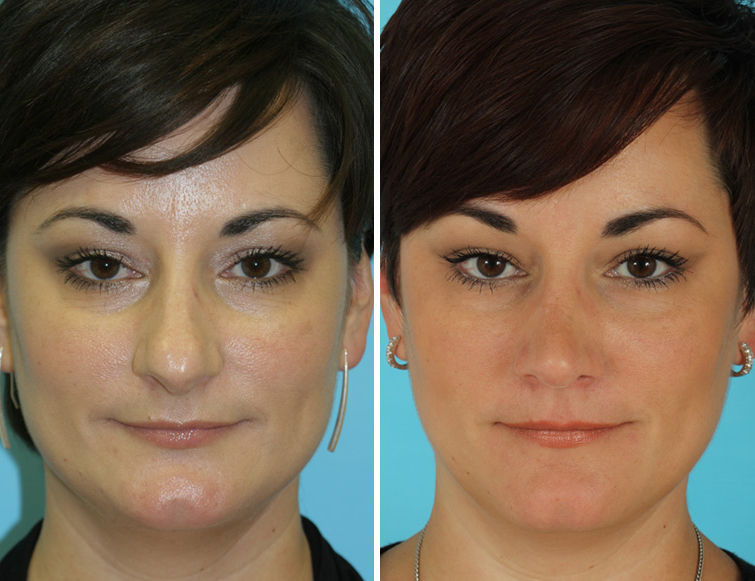
Latin American Rhinoplasty
Dr. Anil Shah’s expertise in ethnic rhinoplasty extends to patients of Latin American descent seeking rhinoplasty in New York City. Given the wide range of facial features and skin types within Latin America, Dr. Shah emphasizes the importance of extensive experience in working with “Latin” skin to determine the most suitable procedures.
Many individuals from Central and South American backgrounds opt for rhinoplasty, typically aiming for a nose that complements their facial features without overshadowing them. Dr. Shah understands the nuances of Latin American aesthetics, ensuring that the results harmonize with the patient’s overall appearance.
In addition to rhinoplasty, aging face surgery poses specific challenges for Central and South American patients. Despite having intermediate skin coloration that offers some protection against sunlight, facial wrinkles can still develop in deeper tissues over time. Dr. Shah adapts his facelift techniques to address tissue sagging and gravitational effects, minimizing scarring and optimizing recovery.
Dr. Shah’s tailored approach to ethnic rhinoplasty and aging face surgery for patients of Latin American descent reflects his dedication to understanding diverse aesthetic needs and delivering natural-looking results that enhance each individual’s unique beauty.
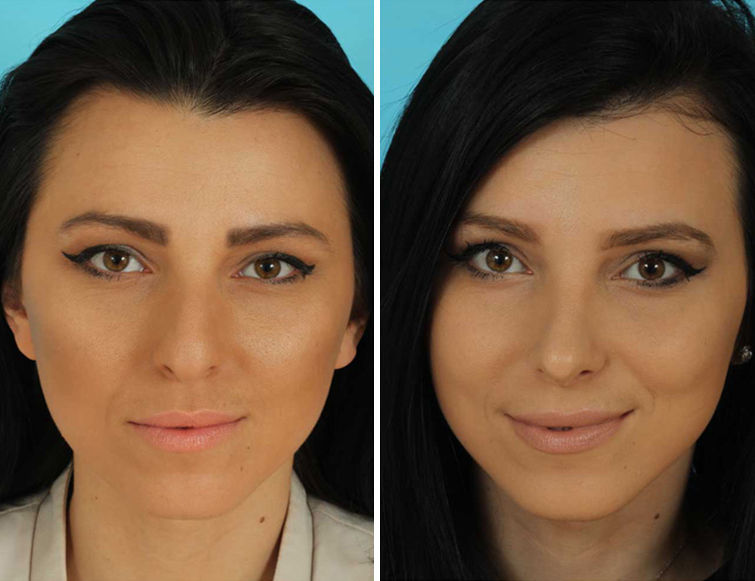
Middle Eastern Rhinoplasty
Patients of Middle Eastern descent, including those from United Arab Emirates, Jordan, Saudi Arabia, and Iran (Persia), seek Dr. Anil Shah’s expertise in ethnic rhinoplasty to enhance their facial aesthetics. Dr. Shah, renowned for delivering natural-looking results, has become a trusted figure among Middle Eastern patients, attracting them from various regions.
Having established himself as a leader in ethnic rhinoplasty during his tenure in New York City, Dr. Shah’s techniques have garnered admiration and trust among Middle Eastern patients. His comprehensive approach includes both open and closed rhinoplasty techniques, with a strong emphasis on understanding each patient’s aesthetic goals.
In consultations, Dr. Shah prioritizes creating a nose that blends seamlessly with the rest of the face, enhancing existing attractive features without dominating the facial profile. The ultimate aim is to achieve a harmonious appearance that enhances overall facial attractiveness.
Post-surgery, most patients plan a recovery period before returning to their home countries in the Middle East, confident in the natural and appealing results achieved by Dr. Shah’s meticulous approach to ethnic rhinoplasty.
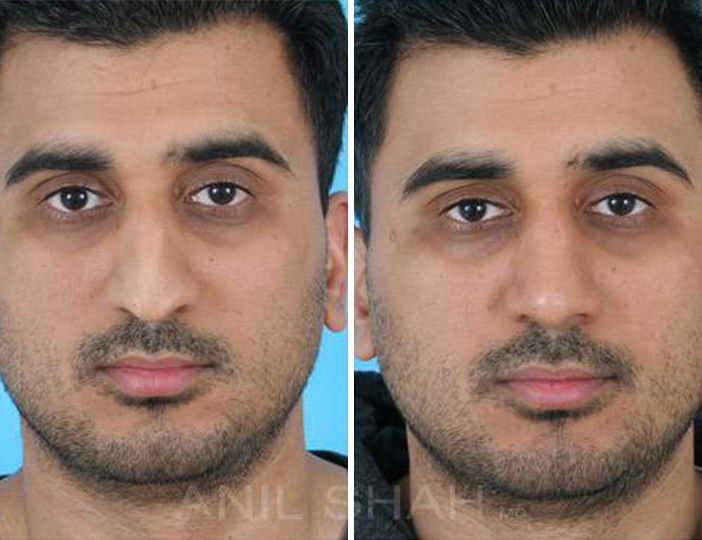
Indian Rhinoplasty
Using the latest technologies and techniques, Dr. Shah can customize his approach with his patients’ noses based on the common goals of his Indian and Pakistani patients.
Dr. Shah’s understanding of Indian and Pakistani facial features allows him to guide patients toward achieving a natural look that harmonizes with their ethnicity and facial structure. Being of Indian descent, Dr. Shah’s goal is to create a nose that not only complements the patient’s overall appearance but also conceals any signs of plastic surgery, ensuring a seamless, authentic and overall natural outcome.
Dr. Shah can address issues like projection, tip definition, and nasal bridge height, achieving results that are both aesthetically pleasing and culturally sensitive. Patients trust Dr. Shah’s ability to enhance their features while preserving their ethnic identity, making him a sought-after expert in ethnic rhinoplasty for individuals of Indian descent in New York City.
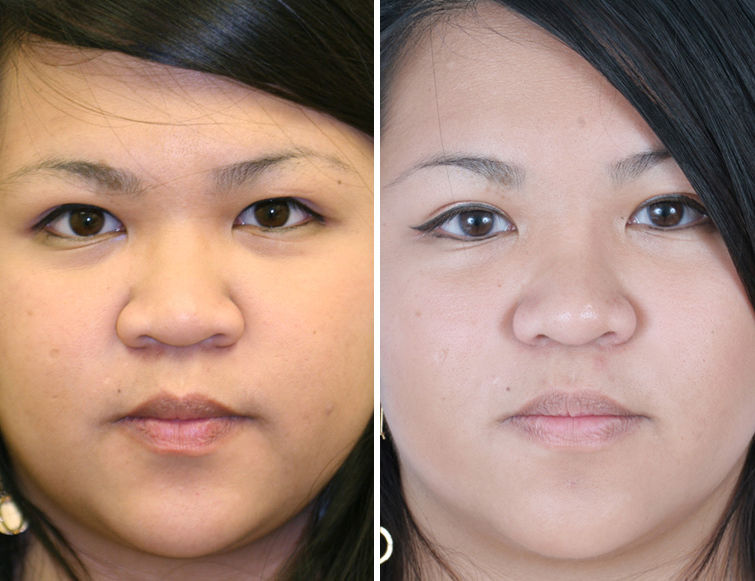
Asian Rhinoplasty
Patients of Asian descent seeking rhinoplasty in New York City trust Dr. Anil Shah’s expertise and dedication to creating natural and long-lasting results. While many plastic surgeons will use foreign objects to help build the nose, in Dr. Shah’s experience, he has found that using natural materials such as cartilage from the patient’s own body reduces the body’s tendencies to reject objects that are put in during surgeries.
Having worked extensively with various ethnicities, Dr. Shah understands the unique anatomical characteristics of Asian noses. Many Asian patients that seek to have a rhinoplasty often look to refine their nasal shape and projection. Some surgeons will not proceed with the surgery, while others will use silicone based objects to achieve this goal that can lead to unwanted issues later down the road. Dr. Shah recognizes that the use of artificial implants can pose risks and may not always achieve the desired natural look.
Instead of using foreign objects, Dr. Shah employs techniques that involve using natural materials such as nose or ear cartilage to sculpt a nose that seamlessly integrates with the patient’s facial features. By using the patient’s own tissues, Dr. Shah not only increases safety and reduces the risk of complications but also ensures a more enduring and harmonious result.
This approach not only results in a more authentic aesthetic but also minimizes the risks associated with artificial implants, such as infection or rejection. By using the patient’s own tissues, Dr. Shah ensures a safer and long-lasting outcome for Asian patients seeking rhinoplasty.
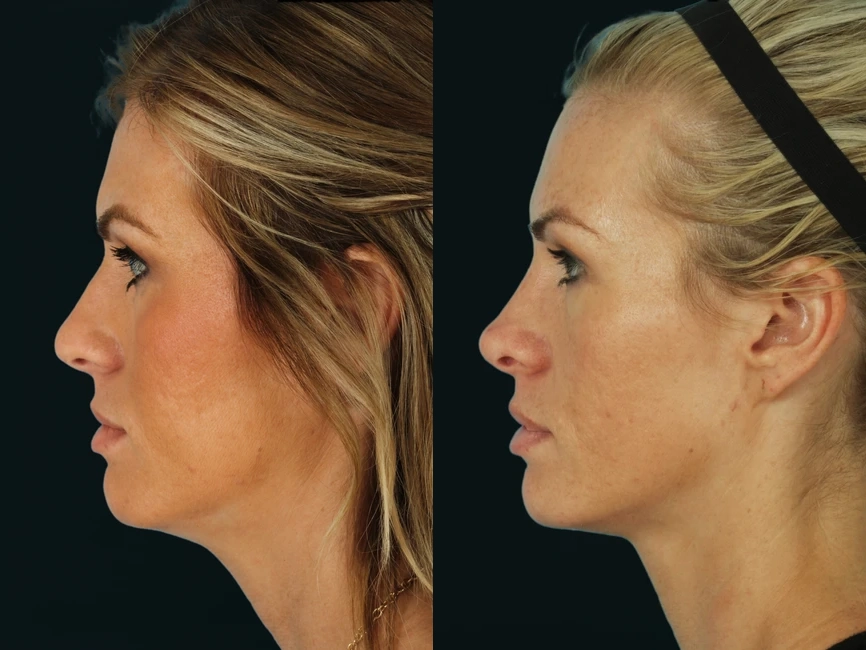
Caucasian Rhinoplasty
Dr. Anil Shah’s expertise in ethnic rhinoplasty extends to Caucasian patients. Unlike other ethnicities, Caucasian rhinoplasty is often not extensively discussed in literature or online resources due to the diverse range of nasal shapes and appearances within this group.
Caucasian noses can vary significantly, from needing projection, reduction, rotation, or a combination of changes to achieve the desired look. Additionally, the term “Caucasian” encompasses a wide array of ethnicities, each with distinct features (e.g., Swedish, Italian, Irish, etc.).
Understanding each patient’s aesthetic goals and desired outcomes within the context of their ethnic background is crucial. Dr. Shah emphasizes personalized consultations and utilizes 3 dimensional computer imaging to help patients visualize potential changes and discuss their preferences effectively. Dr. Shah also employs the latest technologies such ultrasonic rhinoplasty for his procedures. This helps with speeding up recovery time and reduces inaccuracies that the traditional yet arcane hammer and chisel approach can do.
By tailoring his approach to the unique needs of each Caucasian patient, Dr. Shah ensures that the rhinoplasty procedure enhances their natural features while achieving the desired aesthetic goals. This personalized approach not only addresses the structural aspects of the nose but also considers the patient’s cultural background and individual preferences, resulting in satisfying and harmonious outcomes.
South Asian Rhinoplasty
South Asian rhinoplasty patients often present with thicker skin, wider nasal bases, and less tip projection. Dr. Shah’s approach involves subtle structural changes that preserve ethnic identity while addressing aesthetic concerns such as:
- Bulbous or under-projected nasal tip
- Broad dorsum or lack of bridge definition
- Alar base flaring
His precision techniques balance supportive cartilage grafting with conservative refinement, resulting in a more sculpted appearance without compromising cultural features. Patients travel from throughout New York and New Jersey to seek out Dr. Shah for his experience in natural
ethnic rhinoplasty for South Asian faces.
Russian Rhinoplasty
Russian patients often seek refinement in the nasal bridge and tip, but many also require functional improvements due to a deviated septum or previous trauma. Dr. Shah’s expertise lies in achieving harmony with the stronger bone structure and high nasal bridges commonly found in Eastern European profiles.
Key focus areas include:
- Reducing dorsal humps while maintaining facial balance
- Defining the nasal tip with subtle contouring
- Correcting prior nose surgery or breathing issues
His work with Russian rhinoplasty in New York blends structural integrity with aesthetic precision for results that feel both authentic and personalized.
Ukrainian Rhinoplasty
For patients of Ukrainian descent, the nasal anatomy often includes a high bridge, wide nasal bones, or a pronounced dorsal hump. Dr. Shah tailors each procedure to honor these features while softening the profile and enhancing symmetry.
Common refinements include:
- Bridge smoothing without over-reduction
- Tip refinement to reduce bulbosity
- Addressing internal nasal structure for improved function
Recognized as a top Ukrainian nose job surgeon in Manhattan, Dr. Shah emphasizes ethnic preservation with modern technique, ensuring patients retain the essence of their heritage while achieving enhanced facial harmony.
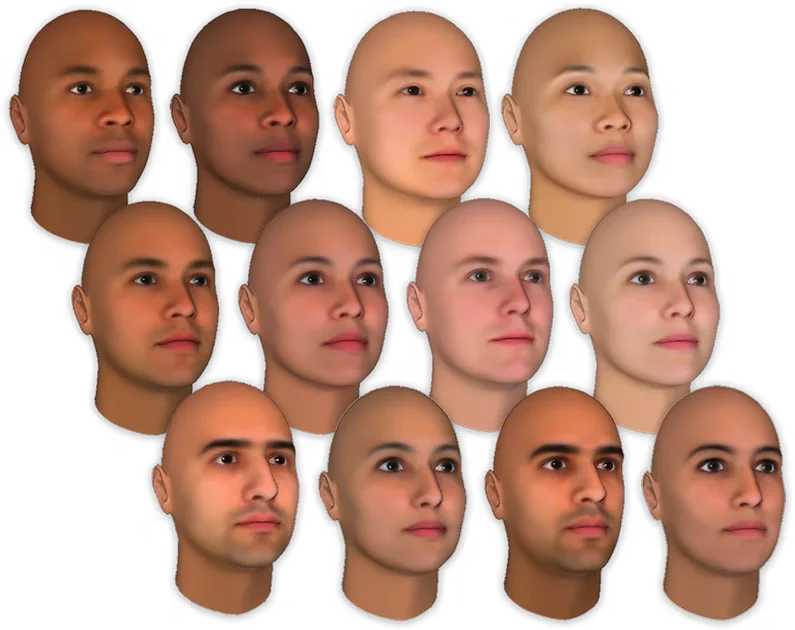
EFACE – Termed “Ethnic Face”
E-Face Tool
Dr. Anil Shah has introduced a groundbreaking tool known as EFACE (Ethnic Face). This innovative tool revolutionizes the approach to facial procedures for patients of diverse ethnic backgrounds.
Featured in various press outlets for his expertise in ethnic rhinoplasty, Dr. Shah’s EFACE tool first garnered attention in 2008 when he discussed its capabilities on Santita Jackson’s WVON 1690 AM show. EFACE, short for ‘ethnic face,’ empowers patients to customize their procedures based on their specific ethnicities.
This tool recognizes the unique facial features and aesthetic preferences that vary across different ethnic groups. By using EFACE, patients can collaborate with Dr. Shah to select different types of procedures that look to enhance their natural beauty while respecting their cultural heritage. Whether it’s rhinoplasty or other facial plastic surgery procedures or facial treatments, EFACE enables personalized treatment plans that cater to individual ethnicities.
Learn About Procedure, Recovery and Cost: Ethnic Rhinoplasty Consultation in NYC
Every ethnic rhinoplasty performed by Dr. Anil Shah begins with a personalized consultation in New York City, where your facial anatomy, skin type, and cultural background are thoughtfully considered. This one-on-one session is your opportunity to share your goals, ask questions, and explore the surgical plan in full detail. During your consultation, Dr. Shah will review:
- Surgical techniques tailored to your anatomy and ethnicity
- Estimated procedure time and recovery timeline
- What to expect at each stage of healing
- A full breakdown of costs and available financing options
Dr. Shah’s approach prioritizes comfort, safety, and long-term satisfaction. Most patients return to non-strenuous activities within one week. While individual healing varies, many are photo-ready within three months, with continued refinement as swelling resolves—typically over the course of a year.
Ongoing follow-up appointments are a vital part of your care. These visits allow Dr. Shah to track healing, adjust aftercare if needed, and ensure that you’re fully supported throughout your recovery.
FAQs about Ethnic Rhinoplasty in NYC
Does ethnic rhinoplasty cost more than regular rhinoplasty?
The cost of any rhinoplasty procedure varies based on factors such as case complexity and surgical time.
Can you have an ethnic rhinoplasty and septoplasty at the same time?
Yes, many patients simultaneously undergo ethnic rhinoplasty and septoplasty to improve both appearance and breathing function.
Are all ethnicities unique?
Absolutely. Each ethnicity, like each face, is distinct. It's crucial for the nose to complement not only the patient's ethnicity but also their personality.
Are there some similarities between some ethnicities?
Yes. For instance, Hispanic noses may exhibit features from both Caucasian and African American ethnicities. Similarly, many Middle Eastern noses share common issues like tip support loss.
Does the cartilage and skin appear different from person to person?
Definitely. Every individual and ethnicity has unique cartilage and skin characteristics. For instance, Caucasian patients often have firmer tip cartilage compared to other ethnicities.
If I am of mixed heritage, can you tell which ethnicity is predominant?
Dr. Shah understands the complexity of mixed heritage, and the nose can be tailored to reflect the patient's aesthetic preferences while considering each ethnicity's features.
Do I need rib cartilage or ear cartilage for ethnic rhinoplasty?
In most cases, cartilage from inside the nose (septum) suffices. However, if additional cartilage is needed, options like ear or rib cartilage can be considered.
Has the media recognized Dr. Shah for his work on ethnic rhinoplasty?
Absolutely. Dr. Shah has been acknowledged as a leading expert in ethnic plastic surgery, particularly in African American and Indian rhinoplasty, as featured in various publications and media outlets.
What sets Dr. Anil Shah apart in the field of ethnic rhinoplasty?
Dr. Anil Shah's expertise lies in creating natural-looking results that harmonize with each patient's unique ethnic features.
How does Dr. Shah approach ethnic rhinoplasty differently?
Dr. Shah's approach involves personalized consultations where he listens to each patient's aesthetic goals and cultural background. He employs advanced techniques and the EFACE tool to customize procedures based on ethnicity, ensuring optimal outcomes.
Is ethnic rhinoplasty suitable for all ethnicities?
Yes, Dr. Shah's expertise extends to patients of various ethnic backgrounds, including but not limited to Asian, Middle Eastern, Indian, African American, and Caucasian. He tailors each procedure to enhance natural beauty while respecting cultural nuances.
How can I schedule a consultation with Dr. Shah for ethnic rhinoplasty in New York City?
Dr. Shah and his team are dedicated to providing personalized care and exceptional results to every patient.
Schedule Your Ethnic Rhinoplasty Consultation in NYC
Whether you seek subtle refinement or comprehensive transformation, experience a patient-focused journey marked by precision, innovation, and respect for your cultural identity. Take the first step toward your ideal profile and contact Noses and Necks NYC today to schedule your rhinoplasty consultation with Dr. Shah today.

